Tags
Birger Sandzen, Garden of Eden, Geographical Center of the 48 States, Kansas, Lebanon KS, S.P. Dinsmoor
My friend Ian recommended a few stops along the way to his house. After a peek at the Geographic Center of the Lower 48 States (GCUS) I checked out the sleepy metropolis of Lebanon, Kansas (population 178), the town nearest the GSUS.
Next up the tiny town of Lucas, once dubbed the Grassroots Art Capital of Kansas for its community of folk art. Remnants of a once vibrant art enclave remain, but they all look rather sad. The 2020 census accounted for 332 souls in Lucas, down from 393 ten years earlier. Its remaining claim to fame is S.P. Dinsmoor’s Garden of Eden.
I soon understood why Ian had been rather vague when recommending the Garden of Eden. It’s hard to put into words what this place is all about. Confusion began at the entrance when I paid my fee and was offered a guided or self-guided tour. I chose the self-guided tour, but no brochures or instructions followed. I backtracked to the entrance to ask someone to turn on an introductory video; the three people at the counter looked at each other in confusion.
Here’s my nutshell: Born in 1843, Dinsmoor returned from soldiering in the Civil War a damaged man. He joined the Masonic Lodge, which at that time was a hotbed of Free Thought ideology. In 1888 he moved with his new wife and her two children to Lucas, KS, They added five more children to the brood.
After his first wife died, Dinsmoor, then age 81, married his 22-year-old Czech housekeeper and along came two more children. Dinsmoor built his 12-room “log cabin” from concrete. That was just the beginning. He also built a mausoleum on the property and had his first wife exhumed and enshrined there. He spent the rest of his life creating concrete sculptures reflecting his Populist beliefs and religious convictions. Dinsmoor expected his sculpture garden to become a sustaining tourist attraction to support his family. The 40-foot-tall concrete trees and the Eye of God with a blinking light in the iris are surely eye catching. But the whole place creeped me out, as it did Dinsmoor’s would-be patrons. I couldn’t even figure out how to photograph its weirdness. There are no less than three massive sculptures depicting the story of Cain and Abel, a soldier, an Indian, chain of dog-eat-dog life, and civilization topped by the Goddess of Liberty. It all made my head spin.
Collecting my frayed nerves, I headed for possible camping at Wilson Lake. It was hot, treeless, and crowded. Option two: a motel in Salinas. The next morning I stopped in a cool little artsy-fartsy town called Lindsborg where I visited the Sandzen Gallery; it made up for the Garden of Eden.
I’d never heard of the artist Birger Sandzen, who was born and educated in Sweden in 1871. After a few years spent immersed in the Paris art world, Sandzen came to Bethany College in Linsborg, Kansas to teach language, art, and vocal music. He retired in 1946 and died in 1954. Despite his full teaching schedule, Sandzen was a prolific artist who created works in a variety of media. Some of his oil landscapes are huge. Sandzen was passionate about bringing beauty, much of it based on simple landscapes, to humanity. The gallery bearing his name was built three years after his death and is dedicated to displaying his work as well as highlighting active contemporary artists, many of whom are Kansas natives. I fell in love with Sandzen’s body of work, and also enjoyed works by Kelly Yarbrough and Clive Fullagar, both of Manhattan, Kansas; and Doug Osa, of Olathe Kansas.
A few more shots of Kansas before I arrive at Ian’s house in Wichita.


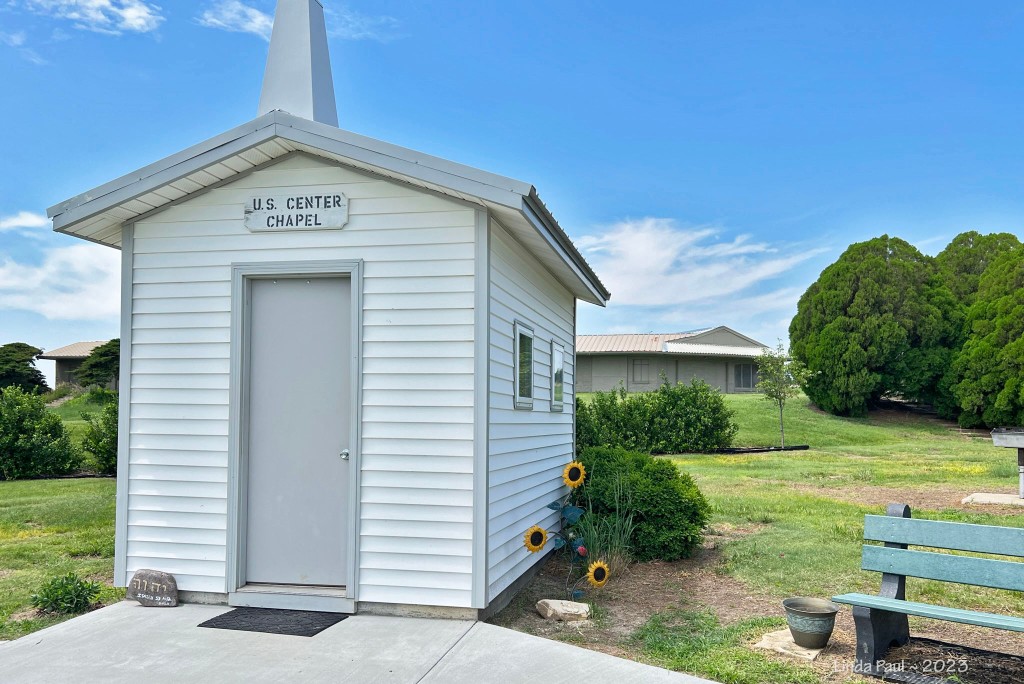

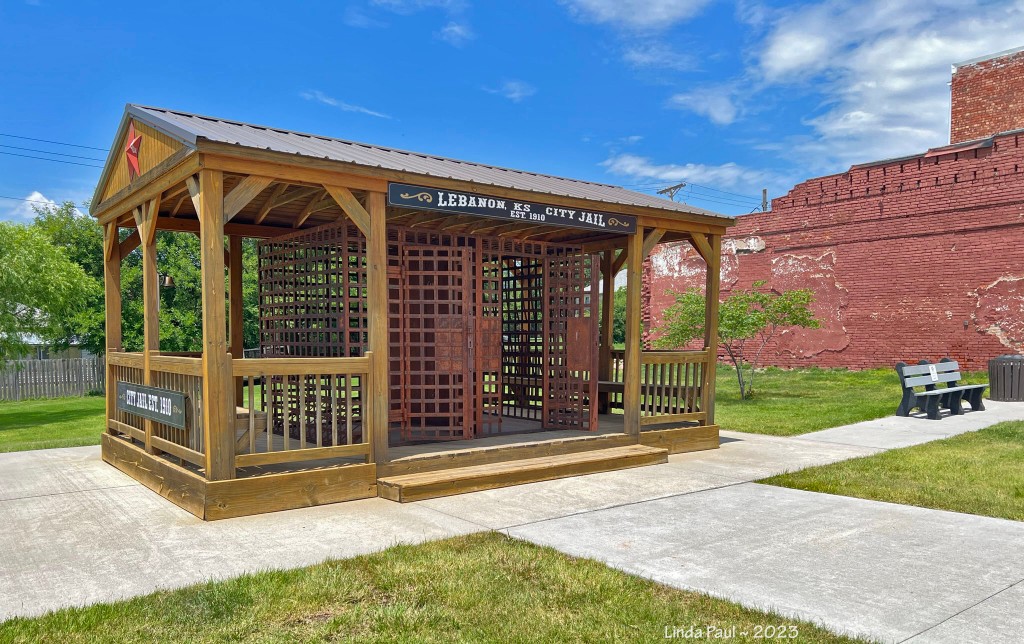


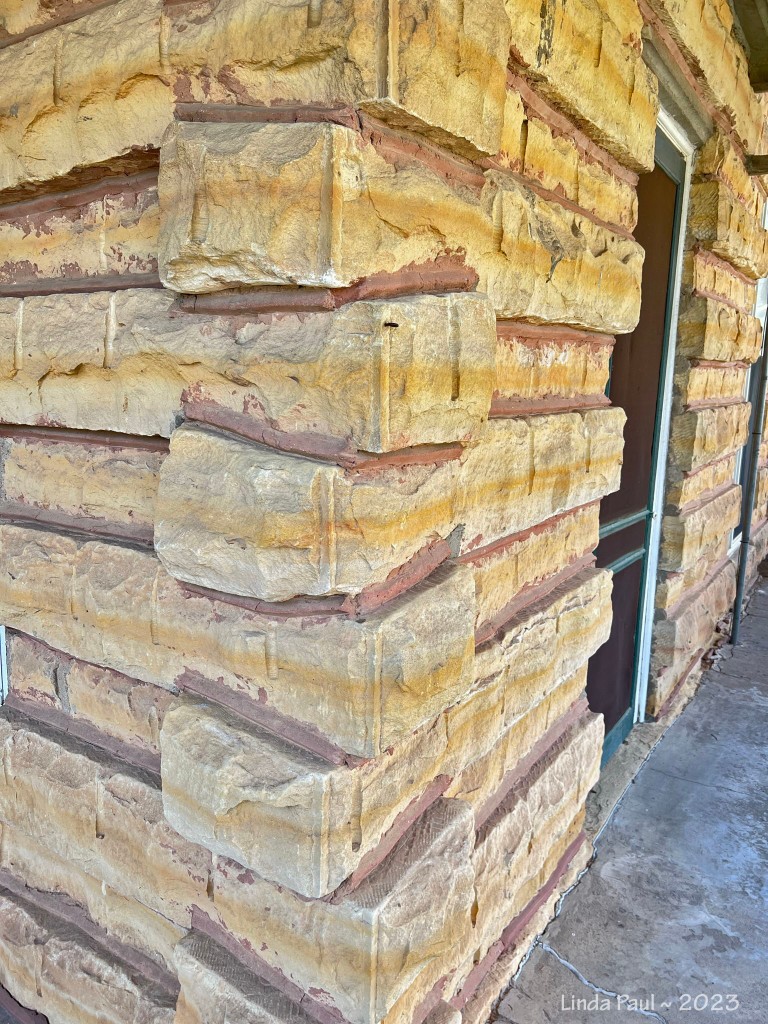
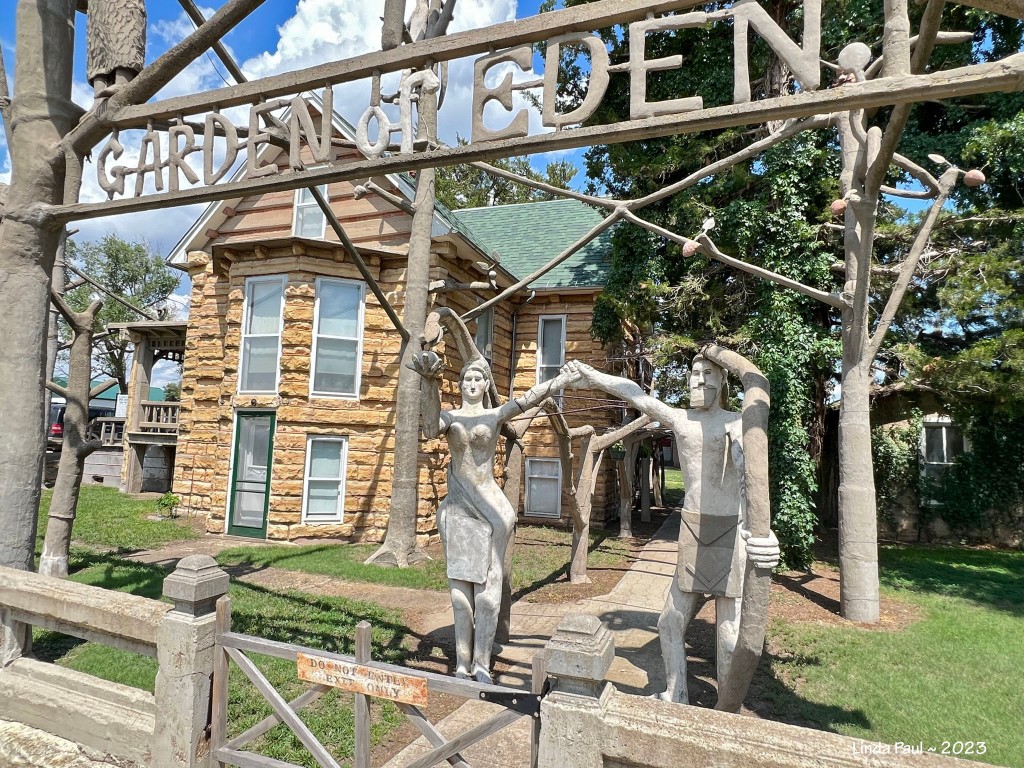






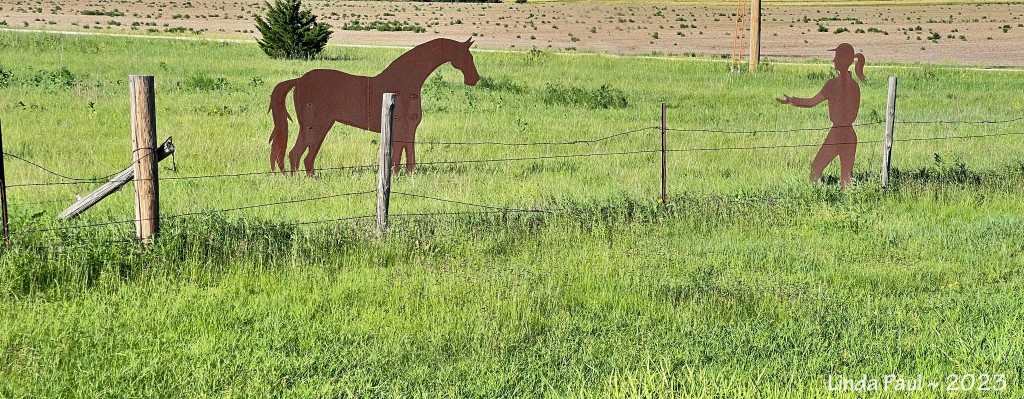
every town has got to have its resident eccentric, and Lucas definitely had theirs. Interesting, some is creepy but worth a look. I had to laugh about the “self-guided ” tour. I laughed again at the closed tourist center, but did like the depiction of the old gas station. I did look up Birger Sandzen’s work, liked his paintings and some of his woodblock prints were very nice. Weird, when I clicked on a link showing similar work, I ended up on a Wayfair site. Is the horse and girl in the field at your friend, Ian’s place or along the way? I like the ingenuity of farming folk; being on the land seems to bring out their artistic appreciation for their environment. interesting mix of vegetation on the hill, a combination of deciduous and desert-like plants. The lake where there was camping is pretty but isn’t it nice when you can enjoy the travel as well as have choices whether to camp or stay in a hotel. i stayed in a hotel my last night, opting for a shower and comfort and privacy. Good post, thank-you for sharing!
LikeLike
Interesting about the results of your Birger Sandzen search. I wonder if some of his work has been sold to fabric/print designers.
The bronze statue of the horse and the girl was just one of those random things that I saw along the road and had to double back for a second look.
And yes, options are lovely when traveling. I like camping, but I’m not keen on being hot, uncomfortable, and gawked at while doing so.
Glad you enjoyed!
LikeLiked by 1 person
It said similar work, but I did not see anything that was one of his prints.
LikeLike
This kind of thing is only going to become more common on the internet, I fear. It’s all about marketing and AI makes it even easier to reach for straws.
LikeLiked by 1 person
You certainly are leading us on a weird and wonderful tour! Fascinating, thank you so much!
LikeLike
Weird and wonderful. What a great description. I should call it my Weird and Wonderful Road Trip.
LikeLiked by 1 person
What a quirky town and story! Great write-up and photos! I especially like the falling-down house with the windmill (of course)!
LikeLike
I was thinking of you when I took that shot. I thought, Denise would figure out some really amazing angle here and have something fun in the foreground.
Worpress has been acting strangely in many ways lately. I hope you didn’t have to re sign in for each post you commented on today.
LikeLiked by 1 person
No, just the first and then I was good.
LikeLiked by 1 person